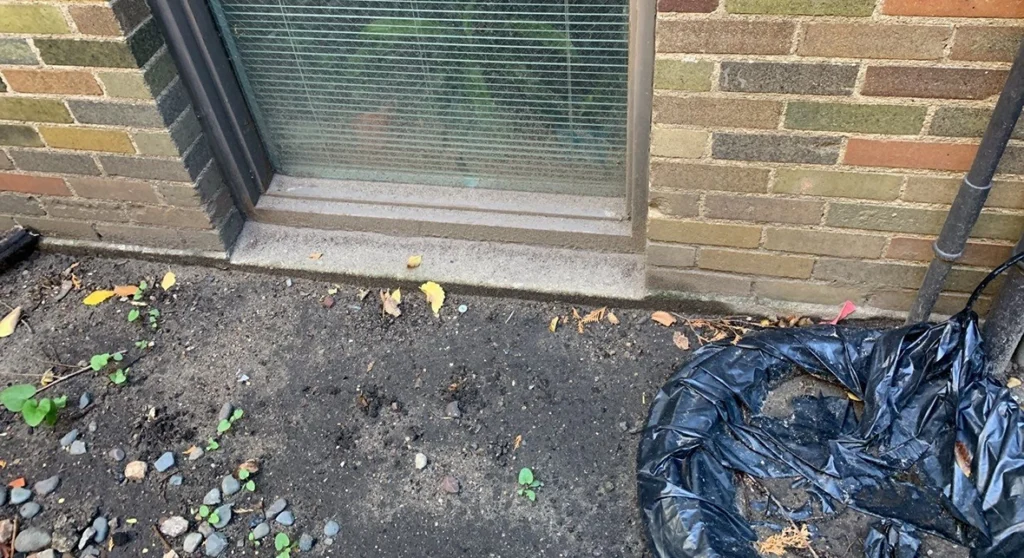Seepage: An Awful Word in the English Language
Perhaps you have read those light-hearted research studies that indicate that as much as 20% of the population dislike the word moist. At Lindstrom Restoration, we think the word seepage can give moist a “run” (yes pun intended) for its money. Is there any context where seepage is positive? Whether it’s wound seepage (sorry for the visual) or water seepage in a home or commercial building, the imagery is mutually disgusting.
February and March are known for the most seepage or groundwater runoff as it is also known. This is water that enters buildings through the floor, walls, foundation, or patio doors from the ground outside through heavy rain, or normal snow and ice melting. Rain on frozen ground is particularly troublesome. The water has nowhere to go.
Whatever month it occurs we know it is a phone call, text, or email insurance professionals never want. The reason? As a restoration contractor, our experience is most policies do not cover the peril. As agents and customer service representatives will tell you, many policyholders aren’t aware of this coverage exclusion and become disappointed, even angry when informed.

It’s not a pleasant conversation. Industry pros will tell you the exchange goes something like this: Insured: “I have been paying my insurance premiums for X years and haven’t had a loss. Now you’re telling me this isn’t covered?” That’s a heartbreaking question from a great client who’s been paying their premiums and has been loss free. Agents have great sympathy for the customer but tell people that this type of loss isn’t usually covered by most insurance policies.
To be clear there are a couple of companies out there that provide limited coverage for seepage, but there is an additional premium for that. Nothing comes free. To be sure, people should always check with their agent when they have policy coverage questions.
Restoration companies like Lindstrom don’t like seepage either, as we are usually the first to lay eyes on the loss. Since there is no pipe burst, toilet or sink overflow, water heater leak, sump pump failure, or obvious water source from the roof (ice dam this time of year see our January blog), all instances which may be covered, (again depending on the specific policy) we realize that this might be an out-of-pocket loss. If it’s not covered, we know it’s more likely we’ll have a very unhappy homeowner.
Many clients expect restoration companies to dry things out without any kind of coverage confirmation, or out-of-pocket payment. People want immediate solutions to their problems. They are further annoyed when told by the restoration professional that future leaking may occur, complicating the drying process.
Depending on the time of year, the outside snowpack, and whether a heavy rain had just fallen, most contractors will tell customers to hold off drying until the water source causing the problem is eliminated. When asked for a significant downpayment to proceed with drying, many people will balk and not pay because they can’t afford it or think they’re being overcharged.
At this point some homeowners will try and save money by doing it themselves. It’s only water, isn’t it? The policyholder gets every fan they can lay their hands on, and maybe a couple of home dehumidifiers and attempt to dry areas affected. Agents and restoration pros will tell you how this DIY project turns out.
Since most people don’t have the proper equipment and expertise to dry structures and contents properly, things begin to smell within days. Mold may develop. They don’t realize that the moisture (oh oh, there’s that ugly word again) may have wicked up their basement walls and gotten under carpet and pad. Unfortunately, they unwittingly increase their costs to return things to pre-loss condition.
In our January blog, we advise people to safely rake snow off their roofs to avoid ice dams. What we didn’t tell them was all that snow they raked off is now packed in fairly close to their foundation and may leak back into the house if their landscaping doesn’t drain water away from the building. What’s the fix?
Yes, it is double the work, but excess snow may have to be shoveled a ways from the house. We can hear the groans now, but this points out the necessity to ensure that no water is draining back into the building. That will be a job for the summer. By the way? Snow should be removed before it turns hard into an impenetrable mound of ice.
In the meantime, if heavy February or March rain falls on all that frozen ground all bets are off. Back in March, a few years ago we had a 1-2 inch rain on frozen, snow-packed ground. Restoration companies across town were swamped as were a lot of basements. Homeowners had to wait in line. It was not fun. As agents know after a big loss, you can’t to everyone fast enough and capacity is finite.
We had to refer a lot of people away to other trusted companies who had some capacity. Our water technicians worked day and night into the weekend. So let’s all hope for a nice gradual melting process and no rain. For now, put Lindstrom into your favorites and speed dial. Call us at 763-544-8761, 24/7/365. We’ll do the best we can to help you or give you a trusted referral.

Leave a Reply